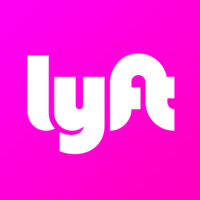- Mario Romero
CQ: To better scope out this project, I’d like to ask a few clarifying questions.
Definition:
- How can we define transportation in this scenario. Is it strictly getting from point A to point B? YES
- Are we sticking to ground transportation only? I’m asking this because all modes of transport currently supported by Lyft is ground. YES
Region:
- Do we already know where we want to operate with this new mode of transportation? U.S.
Stage of product:
- Im assuming that we are in the discovery stage of the product and haven’t had product market fit research done yet, or have we done some explorations of other modes of transport and the data isnt promising? Want to better understand our status quo
Mission: Lyft’s mission is to improve people’s lives with the world’s best transportation. So this new mode of transport should be aligned with this mission.
Strategy (Why): Lyft as a company overall has reached its mature stage and this means our user base under Riders, and more specificaly MAU, has really plataeued and Lyft is operating in a highly competitive market primarily driven by price competitiveness with Uber in the U.S. Providing a new mode of transpotation is a strategic initiative to expand our active user base, which is our main goal here.
User segment: Riders Drivers Renters
User Journey: Focus on renters because this is a relatively new user segment given that Lyft rental car is one of its new offerings.
- Natalie doesnt own a car but frequently rents one to drive out of town on the weekend for hikes
- Natalie has tried Lyft’s rental cars in partnership with Sixt but Sixt locations are limited and quite far from where she lives in Manhattan.
- She wants a closer pickup location where she doesnt have to spend too much time and money to pick up her rental car.
- Sixt sometimes have limited inventory supply as well and would not be able to offer a car that natalie is looking for, eco-friendly suv.
Problems: From the user journey 3 painpoints can be identified
- Time and additional cost to travel far to pickup location (P: high F: high I: high)
- long wait at sixt pick up location (P: high F: low I:Med)
- limited supply of cars to rent with Sixt (P:low F:low I:low)
I would prioritize each of these 3 problems using a matrix evaluating (Pain) (Frequency) (Impact) and measure as low, medium, high Pain: how painful is this specfic problem to our usersd? Frequency: how often do they actually experience this issue? Impact: Among users, how many cope with this issue?
Based on my evaluation criteria, I want to prioritize solving for problem number 1: time and additional travel cost to get to a Sixt pickup location.
Possible solutions:
- Provide airbnb of cars offering a platform similar to Turo and Getaround to allow users to find other lyft users with cars to rent.
- Allow drivers who are inactive to lend their cars out to renters. Drivers can earn additional money without needing to be on the road. Uber has started piloting this.
- Open up partnership with Turo and Getaround
Out of these 3 potential solutions I would want to evaluate each based on value, effort, and frequency. Value: how valuable is it to users to solve the problem?, Effort: operational effort? technical effort?, Frequency: How frequent would renters want to USE this solution, Risk
- Airbnb of cars V:high E:high Freq: high R:low
- Allow drivers to rent their cars: V:high E: med F:med Risk:med
- partnerhsip with Turo V:med E:med F: high Risk: low
I would prioritize airbnb for cars to compete. Lyft can leverage its current fleet of drivers and also riders who own vehicles. This will reduce time and cost if we can provide travelers with closer rentable vehicles to their home locations by providing a peer-to-peer car rental marketplace as a new mode of transportation. This will help boost Lyft’s active user base and be more competitive with Uber. Although there is a risk with competing with Turo who has already been in the airbnb of rental cars market for awhile now, I think lyft has a great advantage over Turo by leveraging riders and drivers to rent vehicles.


 Lyft
Lyft